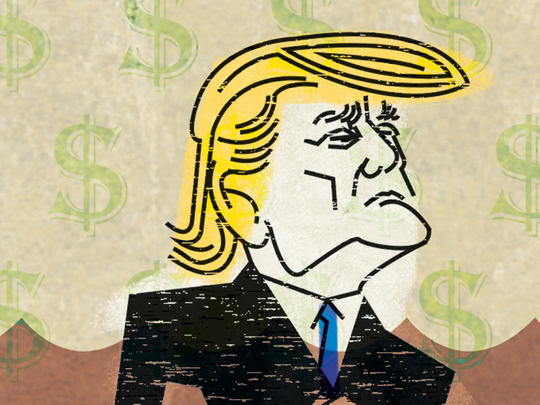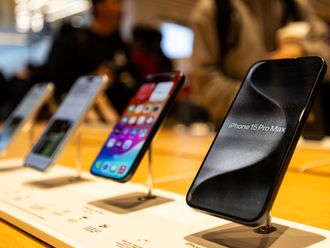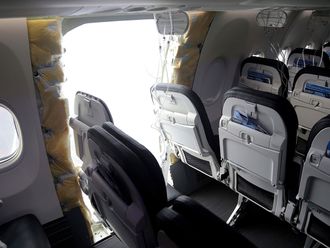
Has the US mismanaged the ascent of China?
The Treasury Department is required to present to Congress a report on the exchange rate policies of the country’s major trading partners, intended to identify manipulators that cheapen their currency to make their exports more attractive and gain market share in the US, a designation that could eventually lead to retaliation. It would be hard, these days, to find an economist who feels China fits the bill.
Under a trade law passed in 2015, a country must meet three criteria: It would have to have a “material” trade surplus with the rest of the world, have a “significant” surplus with the US, and intervene persistently in foreign exchange markets to push its currency in one direction. While China’s surplus with the US is pretty big — almost $350 billion — its global surplus is modest, at 2.4 per cent of its gross domestic product last year.
Most significant, it has been pushing its currency up, not down. Since the middle of 2014 it has sold over $1 trillion from its reserves to prop up the renminbi, under pressure from capital flight by Chinese companies and savers. Even President Trump — who as a candidate promised to label China a currency manipulator on Day 1 and put a 45 per cent tariff on imports of Chinese goods — seems to be backing away from broad, immediate retaliation.
And yet the temptation remains. “When you talk about currency manipulation, when you talk about devaluations,” the Chinese “are world champions,” Trump told “The Financial Times”. For all Trump’s random impulsiveness and bluster — and despite his lack of a coherent strategy to engage with what is likely soon to become the world’s biggest economy — he is not entirely alone with his views.
Many learnt economists and policy experts ruefully acknowledge that the president’s intuition is broadly right: While labelling China a currency manipulator now would look ridiculous, the US should have done it a long time ago.
“With the benefit of hindsight, China should have been named,” said Brad Setser, an expert on international economics and finance. There were reasonable arguments against putting China on the spot and starting a process that could eventually lead to US retaliation.
Yet by not pushing back against China’s currency manipulation, and allowing China to deploy an arsenal of trade tactics of dubious legality to increase exports to the U, successive administrations arguably contributed to the economic dislocations that pummeled so many US workers over more than a decade.
Those dislocations helped propel Trump to power. From 2000 to 2014 China definitely suppressed the rise of the renminbi to maintain a competitive advantage for its exports, buying dollars hand over fist and adding $4 trillion to its foreign reserves over the period. Until 2005, the Chinese government kept the renminbi pegged to the dollar, following it down as the greenback slid against other major currencies starting in 2003.
US multinationals were flocking into China, taking advantage of its entry into the World Trade Organisation in December 2001, which guaranteed access to the US and other world markets for its exports. By 2007, China’s broad trade surplus hit 10 per cent of its gross domestic product — an unheard-of imbalance for an economy this large.
And its surplus with the US amounted to a full third of the US deficit with the world. Though the requirement that the Treasury identify currency manipulators “gaining unfair competitive advantage in international trade” dates back to the Omnibus Trade and Competitiveness Act of 1988, China was never called out.
At the end of the day, economists argued at the time, Chinese exchange rate policies didn’t cost the US much. After all, in 2007 the US was operating at full employment. The trade deficit was because of Americans’ dismal savings rate and supercharged consumption, not a cheap renminbi.
After all, if Americans wanted to consume more than they created, they had to get it somewhere. And the US had a stake in China’s rise. A crucial strategic goal of US foreign policy since Mao’s death had been how to peacefully incorporate China into the existing order of free-market economies, bound by international law into the fabric of the postwar multilateral institutions.
And the strategy even worked — a little bit. China did allow its currency to rise a little from 2005 to 2008. And when the financial crisis hit, it took the foot off the export pedal and deployed a giant fiscal stimulus, which bolstered internal demand.
Yet, though these arguments may all be true, they omitted an important consideration: The overhaul of the world economy imposed by China’s global rise also created losers. Lots of US workers, in many communities, suffered a blow from which they never recovered.
Rising Chinese imports from 1999 to 2011 cost up to 2.4 million US jobs, one paper estimated. Another found that sagging wages in local labour markets exposed to Chinese competition reduced earnings by $213 per adult per year. Economic theory posited that a developed country like the US would adjust to import competition by moving workers into more advanced industries that competed successfully in global markets.
In the real world of US workers exposed to the rush of imports after China erupted onto world markets, the adjustment didn’t happen.
Will Trump really go after China? In addition to an expected executive order to retaliate against the dumping of Chinese steel, he has promised more. He could tinker with the definitions of “material” and “significant” trade surpluses to justify a manipulation charge.
And yet a charge of manipulation would add irony upon irony. “It would be incredibly ironic not to have named China a manipulator when it was manipulating, and name it when it is not,” Setser told me. And Trump would be retaliating against the economic dynamic that handed him the presidency.
— New York Times News Service












